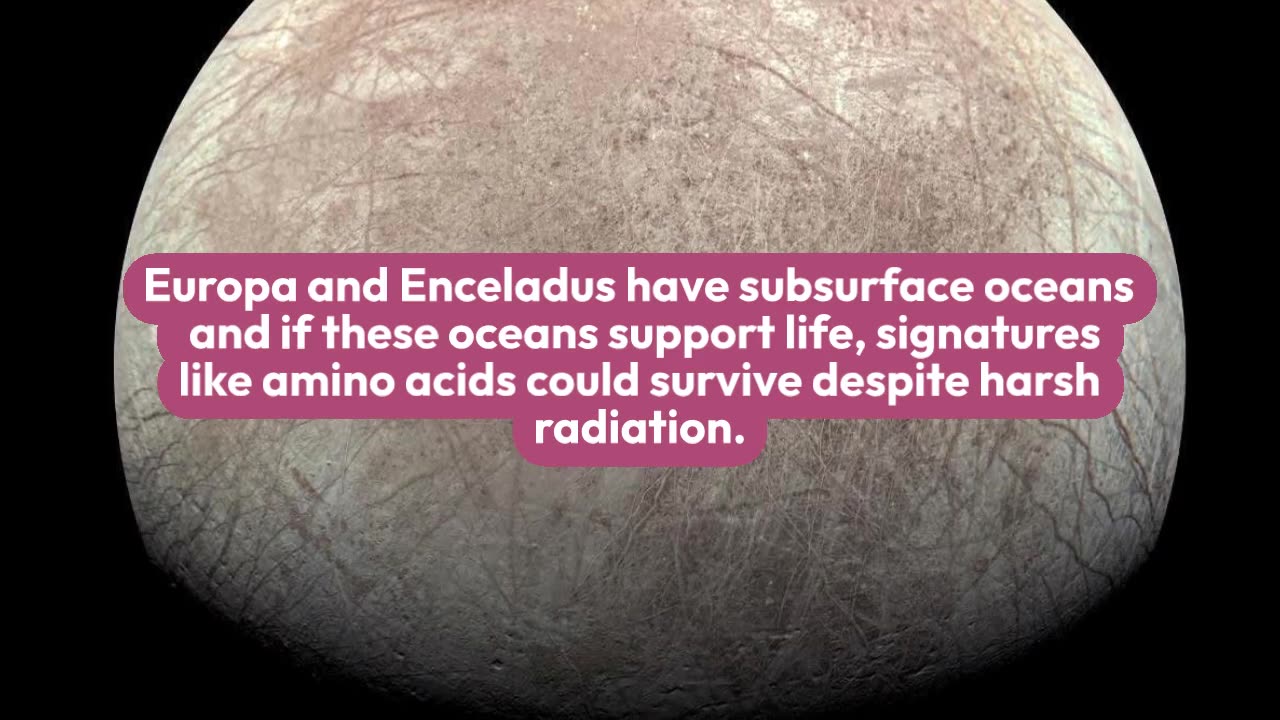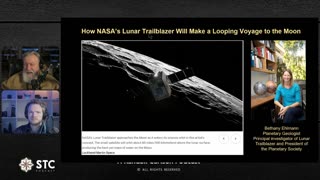Premium Only Content

NASA Experiment Reveals: Life Signs Could Survive Near Surfaces of Enceladus and Europa
NASA researchers have found that amino acids, potential indicators of life, could survive near the surface of Europa and Enceladus, moons of Jupiter and Saturn respectively.
Experiments indicate that these organic molecules can withstand radiation just under the ice, making them accessible to future robotic landers without deep drilling.
Exploring Life Potential on Icy Moons
Europa, a moon of Jupiter, and Enceladus, a moon of Saturn, have evidence of oceans beneath their ice crusts. A NASA experiment suggests that if these oceans support life, signatures of that life in the form of organic molecules (e.g. amino acids, nucleic acids, etc.) could survive just under the surface ice despite the harsh radiation on these worlds. If robotic landers are sent to these moons to look for life signs, they would not have to dig very deep to find amino acids that have survived being altered or destroyed by radiation.
-
 8:43
8:43
Film Threat
20 hours agoTHE MONKEY | Film Threat Reviews
1.43K1 -
 15:55
15:55
TSPLY
22 hours agoThe Media Is Very Afraid Of FBI Director Kash Patel
7873 -
 6:57
6:57
Cooking with Gruel
15 hours agoMake Cheese Great Again
1.39K4 -
 5:17
5:17
Mrgunsngear
18 hours ago $1.64 earnedPresident Trump Has Appointed A New ATF Director
6.32K20 -
 48:17
48:17
Athlete & Artist Show
8 days agoS5E1: Chucky Announces First Kid, 4 Nations Face Off, and more!
818 -
 38:30
38:30
hickok45
4 hours agoSunday Shoot-a-Round # 269
1.37K6 -
 1:39:55
1:39:55
Squaring The Circle, A Randall Carlson Podcast
23 hours ago#040 Humanity's Expansion Into The Cosmos: A New Age - Squaring The Circle
2.3K3 -
 12:54
12:54
ariellescarcella
13 hours agoYou're NOT Queer, Just Annoying And Boring
4393 -
 18:57
18:57
Fit'n Fire
9 hours agoA PDW That Thumps -- Stribog SP45A3 45ACP
9621 -
 LIVE
LIVE
Game On!
13 hours ago $0.49 earnedAnother Sunday Without Football...
575 watching